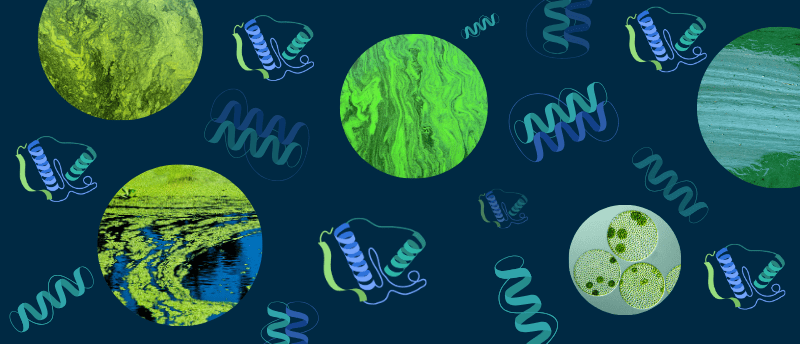Rapid mass spectrometry could detect harmful algae before they pose a threat

Native mass spectrometry that targets the blue component of blue-green algae has been found to be more sensitive to potentially toxic blooms than current techniques.
Researchers at the University of Birmingham (UK) have developed a powerful new method to detect harmful blue-green algae in freshwater lakes. Their technique, which employs advanced mass spectrometry (MS), can identify toxin-producing blue-green algae in recreational waters before they become a threat to public health.
Blue-green algae, or cyanobacteria, are found in ponds, lakes and oceans worldwide. While the green aspect of their color comes primarily from chlorophyll molecules, another group of light-harvesting complexes, known as phycobilisomes, are responsible for the blue hue in cyanobacteria. Under optimal growth conditions, they can form extensive “blooms” that are highly effective at carbon capture and oxygen production. However, some varieties produce toxins that can be harmful; cyanotoxins are known to cause liver damage and neurological effects in humans and animals.
Mass spectrometry brings greater resolution
Setting out to establish a method to enable the early detection of the spread of blue-green algae, the researchers analyzed samples from UK lakes and found variations in their blue-green algae content. Unlike traditional methods such as microscopy or genetic sequencing, they used high-resolving native MS to accurately identify and differentiate between cyanobacterial species.
Phycobilisomes can be comprised of a variety of different phycobiliproteins, each with slightly different masses across different strains of cyanobacteria. By comparing the size of the phycobiliprotein fragments, the team was able to differentiate between toxin-producing and non-toxin-producing blue-green algae. They were also able to detect and quantify specific toxins, differentiating between innocuous and potentially unsafe blooms.
Jaspreet Sound, a PhD researcher at the University of Birmingham and first author of the paper, commented, “Our approach is quick and really sensitive, so can be used to monitor how all the cyanobacteria are competing for growth within lake water prior to the domination of a single toxic strain emerging.”
This offers significant benefits over microscopy, which provides a less defined view of the species in a sample, and flow cytometry, which is unable to differentiate between similar strains and may be challenged by complex conformations.
Cyanobacteria are a current and future threat
Tim Overton, University of Birmingham, stated that the new technique, “advances existing approaches and will not only help improve water quality for human use but also plays a role in understanding how to protect critical wetland environments.”
Aneika Leney, University of Birmingham and corresponding author of the study, highlighted the broader implications: “As climate change increases, so will the variability and complexity of bloom dynamics, so the ability to identify bloom composition and toxin presence will help us make data-driven decisions about water use restrictions, treatment and public health advisories.”
This technology could support several UN Sustainable Development Goals, including Clean Water and Sanitation, and Good Health and Wellbeing, which aim to improve human lives and protect the environment by tackling the effects of climate change. Lakes often have toxin levels exceeding WHO guidelines for drinking water, underscoring the urgent need for early detection tools to safeguard both the public and local ecosystems. The team believes their mass spectrometry technique could play a vital role in protecting water quality and public health in the coming years.